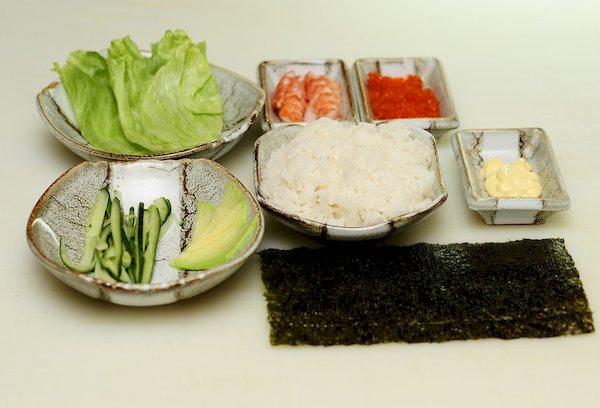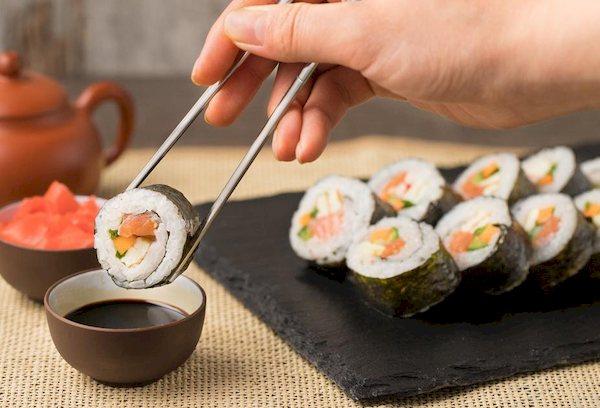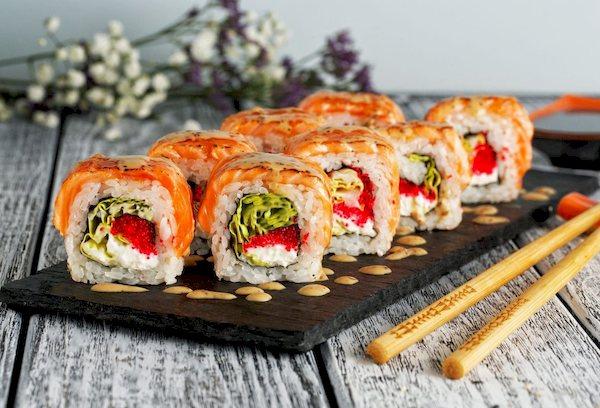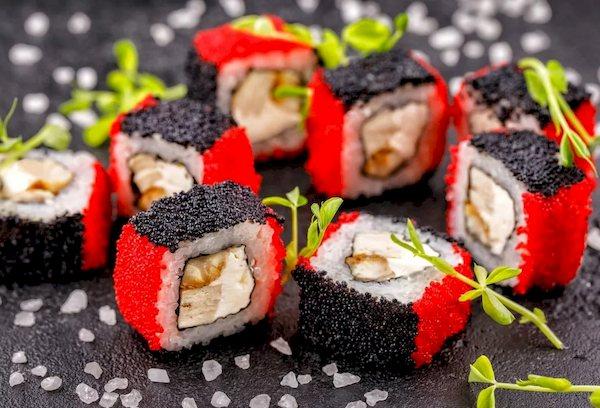What is the difference between sushi and rolls?
Content:
Asian cuisine has long ceased to be something outlandish, and you can find establishments where they are served in almost every locality of our country. But despite this, many still do not understand the difference between sushi and rolls. In short, the difference is that sushi in its classic version is small lumps of rice with a filling on top, and rolls are rolls wrapped in nori (dried pressed seaweed) with filling inside. But if you study the issue in more detail, it becomes clear that there are many more differences - in addition to appearance, they lie in the composition and form of dishes, methods of preparation, serving, etc.
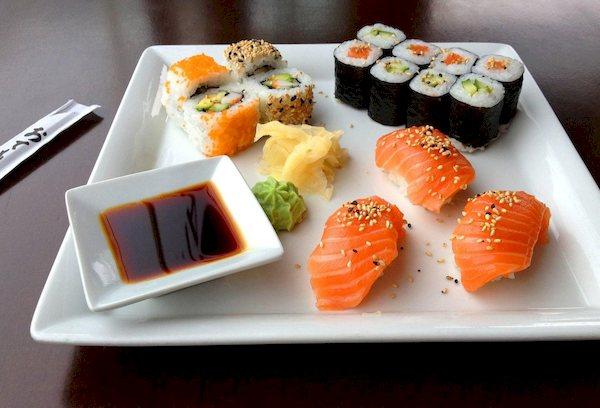
How to distinguish sushi from rolls
Some ordinary people believe that sushi and rolls are different names for the same dish. They're not so wrong. The fact is that there are many types of sushi, and rolls are one of the variations.
The similarity of the dishes is that in both the first and second cases, the basis is rice, seasoned with a small amount of rice vinegar. Sushi and rolls are also eaten with soy sauce, wasabi (crushed root of Eutrema japonica, which is considered a type of horseradish) and pickled ginger (called gari in Asian countries).
There are many more criteria that distinguish sushi from rolls.
Form
Classic sushi always has soft outlines, the rice is formed into “balls” or oval, oblong lumps, and the filling is placed on top. Sometimes the components are held together by a narrow strip of seaweed.
Rolls are not only round, but also rectangular, square and even triangular. On the Internet you can find many photos of the original presentation of the dish, when on one plate a unique “composition” is presented, made up of rolls of different shapes.
Compound
The filling of classic sushi is one-component - fish (salmon, tuna, eel, yellowtail, mackerel, snapper) or seafood (shrimp, octopus, squid, sea urchin). Alternatively, pickled vegetables, pickled soybeans, canned plums, pieces of pumpkin, cucumber or omelet, sweet corn, etc. can be placed on top of the rice.
The filling of the rolls is much more varied. The main component, in addition to fish and seafood, can be pieces of meat or poultry. They are supplemented with vegetables, fruits, soft cheese, boiled or fried eggs, etc. There are also sweet, dessert variations of rolls. But nori is present in any type of dish. Moreover, the seaweed can be not only the outer layer; in many establishments they serve “reverse rolls”, where it is located on the inside and the rice on the outside.
Cooking method
The technology for preparing rice for rolls and sushi is no different - in short, in both cases the grains are not boiled, but steamed. The difference lies in further preparation.
“Koloboks” for sushi are formed with hands dipped in water. Some cooks coat their palms with rice vinegar to prevent the sticky grains from sticking to the skin.
The rolls are prepared on a special bamboo mat. The ingredients are placed and then rolled into a roll so that rice or nori is on top. Then it is cut into 6, 8, sometimes 10 or 12 equal parts. And if sushi is eaten only cold, then mini rolls can be warm.
Innings
Sushi is served on a square ceramic dish or a flat wooden tray that resembles a cutting board. The rolls are placed on a large rectangular plate.
In both cases, soy sauce, wasabi and pickled ginger are always present on the table. And for each guest there is a separate plate, where he puts portions from the common dish.
Method of use
In Japan, sushi and rolls are eaten with chopsticks or hands, but never with a fork. And in Russian establishments this cutlery is often offered to guests along with the traditional version.
The differences in the method of use are as follows:
- sushi is dipped in soy sauce on the side where the filling is located;
- The rolls are dipped edge-on, so that the cut on one side is completely moistened.
Eat whole portions without biting them, otherwise the “bun” or mini-roll may fall apart.
Sushi: history and varieties
In a form close to the modern one, sushi appeared in Asian countries in the 17th century. The dish consisted of rice, rice malt, pickled sea fish or seafood and vegetables. Later, with the advent of rice vinegar, it was also included in the list of required ingredients.
In the 19th century, the Japanese chef Yohei Hanai was the first to prepare a dish not with pickled, but with raw fish. This option quickly gained popularity due to its ease of preparation, and establishments specializing in sushi began to open in the Land of the Rising Sun.And in European countries, the dish became widespread only towards the end of the last century.
Nowadays there are many types of sushi. The differences lie not only in the fillings, but also in the way the ingredients are combined and the shape of the dish:
- Nigirizushi (nigiri) is an oblong ball of rice and a small amount of wasabi with a thin slice of filling on top. Can be tied with a strip of nori.
- Gomokuzushi is rice mixed with raw or processed filling ingredients.
- Edomae chirashizushi - raw ingredients laid out beautifully on top of rice grains.
- Chirashizushi is rice placed in a plate and sprinkled with crushed filling ingredients.
- Inarizushi - steamed grains are placed in “bags” of thin omelette, dried pumpkin or deep-fried tofu.
- Oshizushi - sticks of filling covered with rice, pressed in a special wooden device (oshibako). The resulting layer is cut into small rectangular portions.
- Temakizushi (temaki) is large, about 10 cm in length, sushi, which is pieces of nori rolled into a cone, filled with rice and filling. They eat them with their hands, because doing it with chopsticks is extremely inconvenient.
- Gunkan maki are oval lumps of rice, framed around the perimeter with seaweed so as to give the portion the shape of a ship. The filling can be different - from fish to omelet or vegetables.
The dish, known outside Japan as rolls, is called makizushi (rolled sushi) in the Land of the Rising Sun. Depending on the size and thickness, it is divided into futomaki (large) and hosomaki (small). Uramaki stands apart - these are medium-sized “reverse rolls”. Rice, which is the outer layer, is sprinkled with sesame seeds, shavings of dried tuna pulp or caviar.
Rolls: traditional and original versions
Rolls (or sushi rolls) appeared in Asian countries somewhat later than the traditional dish, and came to Europe and Russia at the same time as classic sushi. In Japan, not only nori, but also soy paper, thin omelette or perilla leaves can be used as a “wrapper”. Outside the country, these options are not very common, and most often the shell of mini-rolls is thin layers of dried seaweed.
Rolls can be divided into 2 categories - traditional and branded. The first ones are prepared in accordance with the traditions of Japanese cuisine. These are thin rolls filled with sea fish or seafood, wrapped in rice, wrapped in nori and served cold.
The composition and methods of preparing branded rolls are more varied and are developed by chefs of Asian cuisine restaurants. Often "alternative" recipes have little in common with traditional options, for example:
- "Philadelphia". Similar to Japanese urumaki, that is, it is a “reverse roll”, the rice is completely or partially covered with a thin slice of fresh or lightly salted salmon. The required filling ingredient is cream cheese, which can be supplemented with avocado, caviar, cucumber or green onions.
- "California". The filling contains avocado and crab meat, and the outside of the roll is sprinkled with flying fish roe (tobiko). In some versions, the crab can be replaced with shrimp, salmon or tuna, and cucumber can be added instead of avocado (or used together). Sometimes this type of sushi is supplemented with mayonnaise.
- Fried rolls. The rolls are dipped in batter, breaded and deep-fried at 170°C. The crust should become golden and crispy.
- Baked rolls.Often, dishes containing raw fish are subjected to this treatment. The rolls are baked at high temperatures and usually served warm.
In addition to the most well-known “alternative” options listed, there are many more recipes. Having visited several establishments, you will notice that each menu has its own unique types of mini-rolls.
It is impossible to give a definite answer which is better/tastier, sushi or rolls. It all depends on personal preferences, composition and methods of preparing the dish. However, sushi is generally lower in calories and filling. And the rolls offer a huge variety of options, and due to their more compact shape, they are more convenient to use than traditional sushi.

